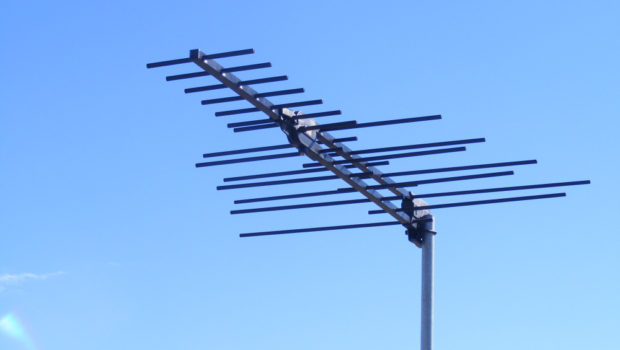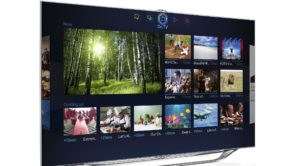TV Signal Booster: 7 Tips to Get More Channels With Outdoor Antenna
Are you now using an antenna for your television? You may have experienced great reception in the first few weeks, but after that, there may be a few issues, and you aren’t able to get more channels as you used to!
But not to worry, as there are ways to remedy that and get even more channels without spending too much money. Read on to learn what you can do to improve your outdoor antenna’s signal and reception!
How to Get More Channels with Your Outdoor Antenna
Do you have problems watching your favorite channels with your outdoor antenna? Try to follow any of these seven tips:
- Increase Your Antenna’s Elevation
For your reception to work as expected, your antenna needs to have a clean line of sight to its transmission towers.
Meaning, you need to point your antenna directly at the towers without any local obstacles, such as buildings, mountains, and/or trees that are in the way. This is because these obstacles would have radio frequency signals split, bouncing off surfaces. This causes the signal to arrive out of phase, resulting in weird effects, pixelation, or no picture.
To help get a clear line of sight, mount it outside and as high as possible to lessen the chance of local obstacles getting in the way. Ideally, you’ll want to install your outdoor antenna 10-20 feet off your ground.
But take note that this isn’t always the surest way to get more channels. It’s better to pair it with the other methods I’ll mention below.
- Check For Your Antenna’s Aim and Location
Many antennas have powerful reception, but it needs to be pointed at the main source of the radio frequency signals.
If you suffer from poor reception, re-aim your antenna, pointing towards the transmission towers. Even just a few degrees may have a huge difference! You can look for your nearest local transmission towers online.
The antenna mast needs to be vertically leveled and when you re-aim to the towers, have someone downstairs rescanning the channels to see how the channels look.
If this doesn’t work, you may want to try relocating it to an entirely new area on the house.
- Check For Any Interference
You should also check for any items that cause interference, such as reflective surfaces around the antenna. Even electromagnetic appliances in the house may distort and/or weaken the incoming radio frequency signals.
Check for inadequate cable and/or wiring insulation, remove reflective surfaces, as well as any interference from cellular towers.
- Reset the Digital Tuner
Digital tuners convert incoming TV signals into a digital format to display on your TV screen. These are usually found in your TV, or it comes as an external, such as in the converter box or set-top. The tuner would store channel information, allowing you to switch channels.
Sometimes, broadcasters would change their channel’s meta-information. Try to clear your tuner’s memory cache to see if it will refresh the channel information. You can check for your television’s instruction manual to see what you can do to reset your tuner.
You don’t need to reset your tuner for new channel information, as you need to do a channel rescan. However, if you have a tough time getting specific channels, you may want to try this trick.
- Secure Your Antenna
Weather elements like rain, wind, and the heat of the sun might wear down and erode your outdoor antenna. Even with the sturdy and waterproof frame, its individual parts may not last, especially when it’s made of cheaper quality.
Inspect your outdoor antenna at least once a year, replacing rusted and/or eroded parts before it affects your channel surfing. Take the time to add more protection to your outdoor antenna as well, waterproofing it and adding sealing tape around the cables, if you can. Furthermore, fasten down the antenna and replace worn materials, which may fix the problem.
- Protect Your Antenna From Power Surges
Power surges, usually caused by thunderstorms, may damage household appliances, including your antenna. The buildup of static electric charge from your antenna during thunderstorms can damage connected devices, such as the amplifiers, converter boxes, or even your television.
Even if you aren’t from a lightning-prone area, it’s still best to deal with power surges. You can do this by grounding your antenna and coaxial cable, or installing a surge protector.
- Use an Antenna Rotator and Amp Up the Reception
If the transmission towers are over 90-degrees away from one another, then you may want an antenna rotator. This would re-orient the antenna towards other towers when needed, so you won’t have to get up the roof to re-aim the antenna yourself.
You can also follow other tips to amp up your reception from the coaxial cable. Attach an AC-powered amplifier device, which is deemed effective in improving the signal. You may also want to mount a second antenna as well.
Wrapping It Up
If none of these tips work, you may need to look for TV antenna repairs to see if there is a problem with your outdoor antenna. Professionals can diagnose any problem and/or improve your reception, allowing you to have more channels to watch!
I hope that these tips will help you with your outdoor antenna. Try any of these to see if it works and let me know the outcome in the comments section below. Good luck!
















